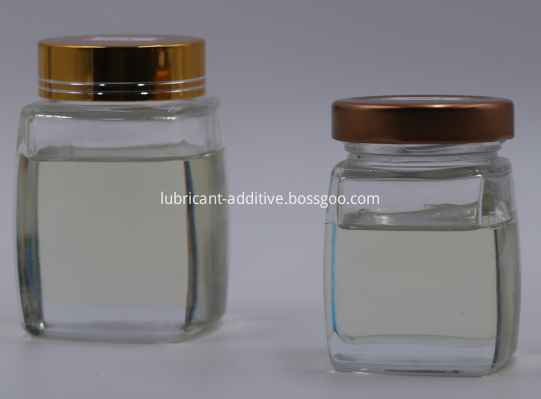Whether or not to do destructive appraisal has always annoyed the old man, so Mr. Zhang found it difficult to find an expert in mahogany, hoping to use a form similar to "Jianbao" on TV without damaging the coffee table Experts help to identify and see if this coffee table is the real Laos red rosewood.
Similar to the situation of this old man Zhang, many consumers who are new to mahogany furniture judge the type, appearance, processing technology of the mahogany, and the origin mentioned by the merchants, so it is easy to question whether they are "eye-catching". "Inexperience" is the most troublesome thing for many consumers to buy mahogany furniture. Is it really only through multiple purchases that you can gain experience? Last week, we followed Mr. Zhang and visited the expert of redwood, Professor Yang Jiaju, to see how to easily judge the authenticity of red rosewood under visual inspection.
Look for "acid fragrance" to distinguish the authenticity of red rosewood
Professor Yang judged whether the material of the coffee table was red rosewood.
Professor Yang explained to us that red rosewood will exude a unique sour aroma, which is "natural" that other woods that we commonly collectively refer to as "redwood" do not have, so we have to use this unique nature to Determine whether the material of the coffee table is red rosewood. But just lying on the coffee table and smelling it, you can't smell anything, and there needs to be a little harmless damage. We turned the coffee table over under the guidance of Professor Yang. Professor Yang used a small blade that he used to shave to shave off the surface layer of paint on the unobtrusive position of the table legs until the lighter color of the internal material was exposed. Just inside the legs of this freshly scraped coffee table, we all stepped forward to smell it. Although the taste is shallow, it does have a slight sour fragrance.
Professor Yang took out a few pieces of mahogany specimens for us and performed the same operation. The taste was obviously stronger than that of the tea table. Professor Yang said that this is because the raw materials of the coffee table itself have been "dried", so the taste is much smaller, but it will not disappear. Although it takes a little effort, you can still smell, judging by the taste, the raw material of this coffee table is indeed red rosewood.
It's hard to tell the quality of the material
Through the labels attached to several mahogany specimens, we know that there are red sandalwood, red rosewood, rosewood, chicken wing wood, etc. These are actually what we commonly call "redwood". Professor Yang singled out two specimens that were also marked as red rosewood, and showed us through light: Although they belong to red rosewood, they also have good or bad texture. There is a "ditch" on the surface of the wood itself, which can be seen by the naked eye. The deeper and longer these "ditches" are, the worse the texture of the wood, and the shallower, shorter, and more delicate woods with "ditches" have a better texture.
On Mr. Zhang ’s coffee table, we also easily found the “ditch†formed by the wood itself under the guidance of Professor Yang. Professor Yang believes that the "ditch" on this mahogany coffee table is short and delicate, and it can be judged that the wood itself has a good texture. We questioned: Will this kind of ditch be "pasted" because of the lacquering process on the surface of the furniture, making the "ditch" that might be larger look smaller? Professor Yang said that the paint itself does not affect the shape and density of the "ditch" and does not hinder the discrimination.
At the same time, Professor Yang also pointed out that the "ditch" on Laos red rosewood is shallow and delicate in texture, and the material is superior. However, it is impossible to determine whether the raw materials of this coffee table really come from Laos.
For more furniture information , go to http://news.gojiaju.com/
                  Welcome to provide news interview clues Advertising / News Hotline Transfer 8004 QQ
Product
Introduction
This product is
used with antiwear and Ep Additive to gain maximum load carrying ability and EP
performance, and it has good lubricity and strong adhesion. It can solely
blended with other synthetic material, also can be used with PAO and mineral
Base Oil.
Product
Specifications
Item
KV
KV
Viscosity Index
Pour Point
Flash Point
Acid No.
40℃(mm2/s)
100℃(mm2/s)
(VI)
℃
℃
mgKOH/g
M30
27.10
4.87
101
-54
231
0.05
M40
38.44
5.38
58
-48
216
0.05
J460
510
50
158
-35
280
0.05
J680
670
58
150
-29
280
0.05
J1500
1450
115
175
-26
250
0.05
J4600
5100
285
190
-14
250
0.05
J15000
15000
1000
280
-15
257
0.18
J17000
17000
1215
300
-15
257
0.18
J20000
20000
1415
308
-13
257
0.18
J25000
25000
1665
308
-10
250
0.18
Application
and recommended treat rate
Gear Oil
98% max
Wind turbine
gear oil
98% max
Synthetic open
type gear oil 98% max
Features
Good solubility
with additive. Increase oil polarity.
Increse oil
affinity for metals. High thermal oxidant stability.
Can be used as
Friction Improver with good anti-friction performance.
Excellent low
temperature performance.
Increase the power
on performance for engine oil under low temperature.
Increase oil life.
It is biodegradable.
Package,
storage and transportation
Packaged in
plastic drum, N.W. 200KGS/drum.
Stored and
transported as non-dangerous goods, stored in cool, dry and ventilated place.

Gear Oil,Base Oil For Gear Oil,Gear Specialty Base Oil,Specialty Synthetic Base Oil
Zhengzhou Chorus Lubricant Additive Co.,Ltd. , https://www.cn-lubricantadditive.com